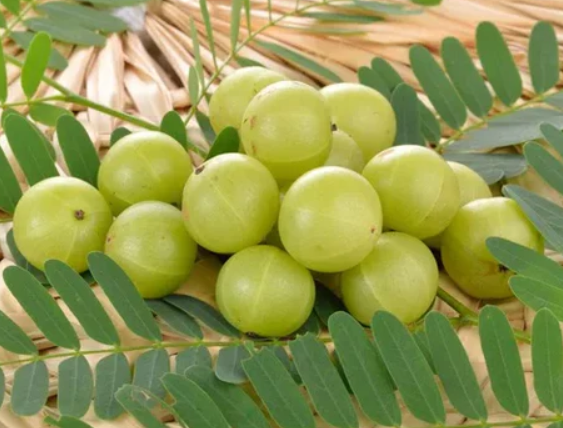Explore the significance of Amalaki in Ayurveda and its diverse uses in promoting health and wellness.
Introduction: Amalaki, also known as Indian Gooseberry or Amla, holds a revered position in Ayurveda, the ancient Indian system of medicine. Its rich history and extensive use in traditional Ayurvedic practices underscore its significance in promoting holistic health and wellness. This article delves into the multifaceted uses of it in Ayurveda, highlighting its therapeutic properties and diverse applications.
Understanding Amalaki
, botanically known as Emblica officinalis, is a small to medium-sized deciduous tree native to the Indian subcontinent. The fruit of the it tree is highly valued for its medicinal properties and is a key ingredient in numerous Ayurvedic formulations. It is renowned for its rich nutrient content, including high levels of vitamin C, antioxidants, and various bioactive compounds.
Also read-5 Health Benefits Of Eating Red Potatoes

Therapeutic Properties
In Ayurveda, Amalaki is classified as a potent Rasayana, or rejuvenating herb, due to its ability to promote longevity, enhance vitality, and rejuvenate bodily tissues. It is revered for its tridoshic properties, meaning it can balance all three doshas—Vata, Pitta, and Kapha—making it suitable for individuals with diverse constitutions and imbalances.

Key Uses in Ayurveda:
- Digestive Health: Amalaki is renowned for its digestive properties and is used to promote healthy digestion, alleviate digestive disorders, and improve appetite. It helps in balancing the digestive fire, known as Agni, and supports the overall functioning of the gastrointestinal tract.
- Immune Support: With its high vitamin C content and potent antioxidant properties, Amalaki strengthens the immune system, enhances resistance against infections, and supports the body’s natural defense mechanisms. It is commonly used in Ayurvedic formulations to boost immunity and prevent recurrent infections.
- Rejuvenation: Amalaki is a premier Rasayana herb in Ayurveda, revered for its ability to rejuvenate and nourish all bodily tissues. It promotes cellular regeneration, improves skin health, and supports overall vitality and longevity.
- Respiratory Health: In Ayurvedic practices, Amalaki is used to support respiratory health and alleviate respiratory conditions such as asthma, bronchitis, and cough. Its expectorant properties help in clearing respiratory passages and soothing inflamed tissues.
- Hair and Skin Care: Amalaki is a key ingredient in various Ayurvedic formulations for hair and skin care. It nourishes the scalp, promotes hair growth, and helps in maintaining healthy skin by protecting against oxidative damage and supporting collagen synthesis.
- Detoxification: As a potent antioxidant, Amalaki aids in detoxification by neutralizing free radicals, supporting liver function, and promoting the elimination of toxins from the body. It is used in Ayurvedic cleansing therapies to purify the body and rejuvenate the mind.
- Cardioprotective Effects: Studies have suggested that Amalaki exhibits cardioprotective effects by lowering cholesterol levels, reducing inflammation, and supporting cardiovascular health. It helps in maintaining healthy blood pressure and improving overall heart function.

Conclusion
It, or Indian Gooseberry, holds immense significance in Ayurveda for its diverse therapeutic properties and holistic benefits. From promoting digestive health and boosting immunity to rejuvenating the body and supporting cardiovascular function, it offers a wide array of health benefits. Its rich nutrient profile, antioxidant content, and versatile applications make it a cornerstone of Ayurvedic medicine, contributing to overall health and wellness.

Incorporating Amalaki into one’s daily regimen can help in maintaining optimal health and vitality, in alignment with the principles of Ayurveda. Whether consumed internally or applied topically, the profound effects of Amalaki underscore its timeless relevance in promoting holistic well-being.

Also read-Understanding Ama In Ayurveda: Significance And Remedies
images source: Google
Disclaimer: The opinions and suggestions expressed in this article are solely those of the individual analysts. These are not the opinions of HNN. For more, please consult with your doctor



































